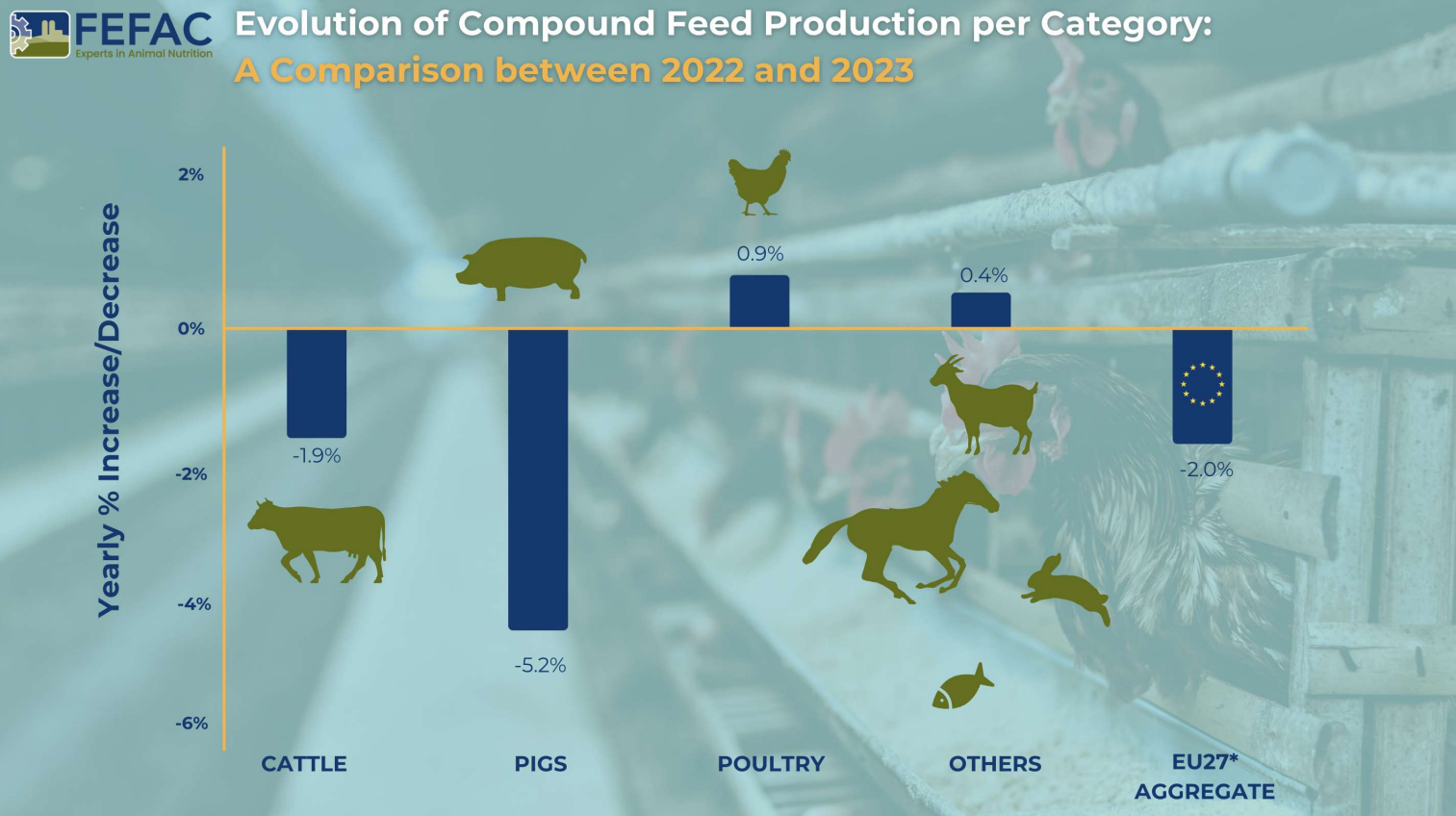Total Production 2023: 144.3 million metric tons for farmed animals
Change from 2022: 2% decrease
Factors Influencing Decrease
Political and Market Pressures: Addressing crises and the shift towards sustainable feed.
Climate and Diseases: Effects of droughts, floods, Avian Influenza (AI), and African Swine Fever (ASF) on raw material supply and animal production.
National Policies: Initiatives for greenhouse gas and nitrate emission reduction.
Consumer Trends: Food price inflation impacting demand.
Production Variability: Different trends across EU Member States, with notable decreases in countries like Germany, Ireland, Denmark, and Hungary, and slight increases in Austria, Bulgaria, Italy, and Romania.
Sector-Specific Trends

Pig Feed: Major decline of nearly 2.5 million tons. Key challenges included:
- Loss of export markets, particularly in Asia
- Negative media impact in Germany
- Significant production drop in Denmark (-13.6%) and Spain (loss of 800,000 metric tons)
- Italy’s ongoing struggle with ASF
Poultry Feed: Increase by 0.9 million tons, yet still 700,000 metric tons below 2021 levels. Challenges included declines in Hungary and Czechia due to reduced broiler production.
Cattle Feed: Decrease of 0.8 million tons from 2022.
2024 key factors
- Animal disease
- Economic instability, persistent food price inflation
- Weather irregularities
- Continued imports of poultry meat from Ukraine
- “Green and animal welfare” policies affecting local production
Summary
The EU’s compound feed production in 2023 faced numerous challenges, leading to an overall decrease. The pig feed sector was most severely hit, while poultry feed showed some recovery. The influence of environmental, economic, and policy factors played a significant role in shaping these trends. Despite the price of feed cereals falling back to the levels seen before Russia’s invasion of Ukraine, these challenges will continue to be felt in 2024.
Source: FEFAC
